“Seasons of Life and Land will surely become a classic of American environmental consciousness. It is
impeccably researched, intelligently conceived, astonishingly observant and radiant with love for its subject.”
—Andrew Robinson, The Times Higher Education Supplement, “The fight for America’s ‘Serengeti’,” 27 June 2003
![]()
“One of the great strengths of Arctic Voices is that it shows how Alaska and the Arctic are tied to the places where most of us live. In this impassioned book, Banerjee shows a situation so serious that it has created a movement, where ‘voices of resistance are gathering, are getting louder and louder.’ May his heartfelt efforts magnify them.”
—Ian Frazier, The New York Review of Books, “In the Beautiful, Threatened North,” 7 March 2013
![]()
2021 HIGHLIGHTS
 |
Routledge Companion to Contemporary Art, Visual Culture, and Climate Change, edited by T.J. Demos, Emily Eliza Scott, and Subhankar Banerjee (Routledge, February 2021). International in scope, this volume brings together leading and emerging voices working at the intersection of contemporary art, visual culture, activism, and climate change, and addresses key questions, such as: why and how do art and visual culture, and their ethics and values, matter with regard to a world increasingly shaped by climate breakdown? Foregrounding a decolonial and climate-justice-based approach, this book joins efforts within the environmental humanities in seeking to widen considerations of climate change as it intersects with social, political, and cultural realms. It simultaneously expands the nascent branches of ecocritical art history and visual culture, and builds toward the advancement of a robust and critical interdisciplinarity appropriate to the complex entanglements of climate change. BOOK PAGE ON ROUTLEDGE |
 |
Defending the Arctic Refuge: A Photographer, an Indigenous Nation, and a Fight for Environmental Justice, by Finis Dunaway (The University of North Carolina Press, May 2021). Tucked away in the northeastern corner of Alaska is one of the most contested landscapes in all of North America: the Arctic National Wildlife Refuge. Considered sacred by Indigenous peoples in Alaska and Canada and treasured by environmentalists, the refuge provides life–sustaining habitat for caribou, polar bears, migratory birds, and other species. For decades, though, the fossil fuel industry and powerful politicians have sought to turn this unique ecosystem into an oil field. Defending the Arctic Refuge tells the improbable story of how the people fought back. At the center of the story is the unlikely figure of Lenny Kohm (1939–2014), a former jazz drummer and aspiring photographer who passionately committed himself to Arctic Refuge activism. Dunaway also discusses Subhankar’s work in the book and, Subhankar wrote a blurb for the book’s back–cover. BOOK PAGE ON UNC PRESS |
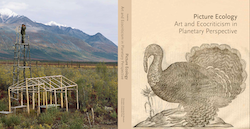 |
Picture Ecology: Art and Ecocriticism in Planetary Perspective, edited by Karl Kusserow (Princeton University Art Museum and Princeton University Press, November 2021). Finis Dunaway’s essay in the book, “Seeing Beyond Borders: Grassroots Visual Culture and the Struggle to Protect the Arctic Refuge” includes a discussion of my Arctic Refuge photographs. Additionally, the book’s back–cover is my photograph of Charlie Swaney from Arctic Village scanning the valley for animals from his hunting/fishing camp along the East Fork of the Chandalar River in the Arctic National Wildlife Refuge.
|
FORTHCOMING
|
Audubon at Sea, edited by Christoph Irmscher and Richard J. King (University of Chicago Press, 2022). Subhankar wrote the book’s Foreword. |
|
Species in Peril (provisional title), by Subhankar Banerjee (Seven Stories Press, 2023). |
AUTHOR / EDITOR (2003–2020)
 |
Arctic National Wildlife Refuge: Seasons of Life and Land, Subhankar’s first book was published by The Mountaineers
Books in 2003, which includes his photographs and stories, a foreword by former U.S. President Jimmy Carter, and essays by Peter Matthiessen, Fran Mauer, William H. Meadows, Debbie S. Miller, George B. Schaller, David Allen Sibley, and Terry Tempest Williams. With a generous grant from the Lannan Foundation, the publisher donated 10,000 copies of the book to Indigenous communities, libraries, policy makers, and students. ON THE MOUNTAINEERS BOOKS WEBSITE |
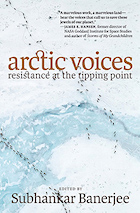 |
Arctic Voices: Resistance at the Tipping Point, edited by Subhankar Banerjee (Seven Stories Press, hardcover 2012; updated paperback 2013). This anthology brings together first–person narratives and art by more than fifty prominent activists, artists, writers, and scholars who address issues of conservation, climate change, resource war, and Indigenous human rights with stunning urgency and groundbreaking research. From Gwich’in activist Sarah James’s impassioned appeal, “We Are the Ones Who Have Everything to Lose,” to an original piece by acclaimed historian Dan O’Neill about his recent trips to the Yukon River fish camps, Arctic Voices is a window into a remarkable region. Other contributors include Seth Kantner, Velma Wallis, Robert Thompson, Riki Ott, Nick Jans, Rosemary Ahtuangaruak, Pamela A. Miller, Andri Snaer Magnason, Cindy Shogan, and Peter Matthiessen. Arctic Voices was made possible by a generous grant from the Alaska Wilderness League. BOOK PAGE ON SEVEN STORIES PRESS WEBSITE |
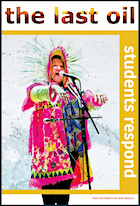 |
the last oil: students respond, edited by Subhankar Banerjee; design by laura c. carlson (Art & Ecology, Department of Art, The University of New Mexico, 8 October 2018). In February 2018, the University of New Mexico (UNM) hosted the last oil: a multispecies justice symposium on Arctic Alaska and beyond convened by Subhankar Banerjee. Twenty–nine artists, activists, attorneys, scientists, conservationists, curators, scholars, and writers from across the United States and Canada gave talks and/or did creative performances; and ten colleagues from UNM and beyond chaired various sessions. the last oil was the first national convening to apprehend the reckless U.S. federal Arctic policy, and also brought impacts of climate change and Indigenous rights concerns in Alaska into conversation with similar impacts and struggles in New Mexico and the west. Published on Indigenous Peoples’ Day, October 8, 2018, the last oil: students respond is a 220–page collection of sixteen responses to the symposium from students in the Integrative Ecology and Social Transformation class at UNM. THE LAST OIL BOOK PAGE (FREE DOWNLOAD) |
AUTHOR OF BOOK CHAPTER
 |
Global Photography: A Critical History, by Heather Diack, Erina Duganne, and Terri Weissman (Routledge, July 2020). This innovative text recounts the history of photography through a series of thematically structured chapters. Designed and written for students studying photography and its history, each chapter approaches its subject by introducing a range of international, contemporary photographers and then contextualizing their work in historical terms. Boxed focus studies throughout the text offer short interviews, curatorial statements and reflections by photographers, critics and leading scholars that link photography's history with its practice. Subhankar wrote a short chapter “Peripatetic photography—crossing borders, building bridges,” which is included in “Focus Box 4: Ecocritical voices” (pp. 92-96). BOOK PAGE ON ROUTLEDGE WEBSITE |
 |
Living in the Anthropocene: Earth in the Age of Humans, edited by W. John Kress and Jeffrey K. Stine (Smithsonian Books, September 2017). The book contextualizes the Anthropocene by presenting paleontological, historical, and contemporary views of various human effects on Earth. It discusses environmental and biological systems that have been changed and affected; the causes of the Anthropocene, such as agricultural spread, pollution, and urbanization; how societies are responding and adapting to these changes; how these changes have been represented in art, film, television, and literature; and finally, offers a look toward the future of our environment and our own lives. Subhankar wrote a short chapter “Why Polar Bears? Seeing the Arctic Anew” (pp. 117-120). BOOK PAGE ON SMITHSONIAN BOOKS WEBSITE |
 |
Photographers and Research: the role of research in contemporary photographic practice, by Shirley Read & Mike Simmons (Routledge, December 2016). This ground–breaking book situates research at the heart of photographic practice, asking the key question: What does research mean for photographers? Illuminating the nature and scope of research and its practical application to photography, the book explores how research provides a critical framework to help develop awareness, extend subject knowledge, and inform the development of photographic work. The authors consider research as integral to the creative process and, through interviews with leading photographers, explore how photographers have embedded research strategies into their creative practice. Subhankar wrote the chapter “Case Study: Subhankar Banerjee” (pp. 26-39). BOOK PAGE ON ROUTLEDGE WEBSITE |
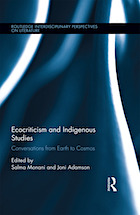 |
Ecocriticism and Indigenous Studies: Conversations from Earth to Cosmos, edited by Salma Monani and Joni Adamson (Routledge, August 2016). Highlighting trans–Indigenous sensibilities that speak to worldwide crises of environmental politics and action against marginalization, the collection alerts readers to movements of community resilience and resistance, cosmological thinking about inter– and intra–generational multi–species relations, and understandings of indigenous aesthetics and material ecologies. It engages with emerging environmental concepts such as multispecies ethnography, cosmopolitics, and trans–indigeneity, as well as with new areas of ecocritical research such as material ecocriticism, biosemiotics, and media studies. Subhankar introduced the concept of 'long environmentalism' in a chapter “Long Environmentalism: After the Listening Session” (pp. 62-81). BOOK PAGE ON ROUTLEDGE WEBSITE |
 |
Routledge Handbook of Religion and Ecology, edited by Willis Jenkins, Mary Evelyn Tucker and John Grim (Routledge, July 2016). The moral values and interpretive systems of religions are crucially involved in how people imagine the challenges of sustainability and how societies mobilize to enhance ecosystem resilience and human well-being. The Routledge Handbook of Religion and Ecology provides the most comprehensive and authoritative overview of the field. It encourages both appreciative and critical angles regarding religious traditions, communities, attitude, and practices. It presents contrasting ways of thinking about "religion" and about "ecology" and about ways of connecting the two terms. Written by a team of leading international experts, the Handbook discusses dynamics of change within religious traditions as well as their roles in responding to global challenges such as climate change, water, conservation, food and population. Subhankar wrote the “Art” chapter that is included in the “Environmental Humanities” section (pp. 374-382). BOOK PAGE ON ROUTLEDGE WEBSITE |
 |
The 18th Biennale of Sydney, all our relations, curated by Catherine de Zegher and Gerald McMaster (Biennale of Sydney, 2012). The title of this year’s Biennale—all our relations—reflects the curatorial premise of its artistic directors Catherine de Zegher and Gerald McMaster. The notion of relation has informed their curatorial conversation and working method and shaped the exhibition project, which follows the idea of interdependency and interconnectedness in the world at large. Subhankar wrote a short essay “Photography’s Silence of (Non)Human Communities” (pp. 360-363). ALL OUR RELATIONS WEBSITE |
 |
Photography Changes Everything, by Marvin Heiferman (co-published by Aperture and the Smithsonian Institution, 2012). Photography Changes Everything offers a provocative rethinking of photography’s impact on our culture and our daily lives. Compiling hundreds of images and responses from leading authorities on photography, it offers a brilliant, reader–friendly exploration of the many ways in which photographs package information and values, demand and hold attention, and shape our knowledge of and experience in the world. Subhankar wrote a short essay “Photography Changes Our Awareness of Global Issues and Responsibilities.” BOOK PAGE ON APERTURE |
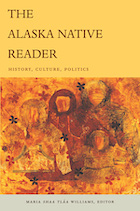 |
The Alaska Native Reader: History, Culture, Politics, edited Maria Sháa Tláa Williams (Duke University Press, September 2009). The Alaska Native Reader describes indigenous worldviews, languages, arts, and other cultural traditions as well as contemporary efforts to preserve them. Several pieces examine Alaska Natives’ experiences of and resistance to Russian and American colonialism; some of these address land claims, self–determination, and sovereignty. Some essays discuss contemporary Alaska Native literature, indigenous philosophical and spiritual tenets, and the ways that Native peoples are represented in the media. Others take up such diverse topics as the use of digital technologies to document Native cultures, planning systems that have enabled indigenous communities to survive in the Arctic for thousands of years, and a project to accurately represent Dena’ina heritage in and around Anchorage. Subhankar wrote a short essay “Terra Incognita: Communities and Resource Wars” that is included in the section “Empire: Processing Colonization” (pp. 184-191). BOOK PAGE ON DUKE UNIVERSITY PRESS WEBSITE |
EXHIBITION CATALOGUES
 |
Species in Peril Along the Rio Grande, exhibition co–curated by Subhankar Banerjee and Josie Lopez, PhD (28 September – 28 December 2019). The exhibition was organized by 516 ARTS in Albuquerque, New Mexico, in partnership with the Art & Ecology program at the University of New Mexico. Alarmed by the escalating loss of nonhuman lives, community members across the Rio Grande / Río Bravo basin, in the borderlands of the United States and Mexico came together to offer a transnational creative response to the tragedy informed by science and Indigenous ecological knowledge. EXHIBITION CATALOG ON SPECIES IN PERIL WEBSITE (FREE DOWNLOAD) |
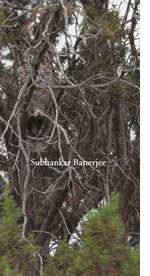 |
Subhankar Banerjee: Where I Live I Hope To Know, published by the Amon Carter Museum of American Art, May 2011. The monograph
includes essays by Subhankar Banerjee and curator Jessica May. The exhibition and the catalog was generously supported by the Lannan Foundation. “WHERE I LIVE I HOPE TO KNOW” BY SUBHANKAR BANERJEE “THE DETECTIVE” BY JESSICA MAY CATALOG COVER |
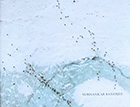 |
Subhankar Banerjee: Photographs, published by Dartmouth College Artist–in–Residence program in conjuction
with an exhibition at the Jaffe-Friede Gallery in the Hopkins Center for Arts at Dartmouth College, January 13-February 8, 2009. The monograph
includes an essay by historian Karl Jacoby. MONOGRAPH PDF WITH KARL JACOBY ESSAY |
 |
Subhankar Banerjee: Resource Wars, published by Sundaram Tagore Gallery in conjuction
with exhibitions at the galleries in New York and Beverly Hills in 2008. The monograph
includes an introduction by Peter Matthiessen, an essay by photography historian Kelley E. Wilder, and a text booklet with extended captions by Subhankar. PETER MATTHIESSEN INTRODUCTION DR. KELLEY E. WILDER ESSAY RESOURCE WARS TEXT BOOKLET |
 |
Subhankar Banerjee: The Last Wilderness, Photographs
of the Arctic National Wildlife Refuge, published by Gerald Peters Gallery in conjuction
with exhibitions at the galleries in New York, Santa Fe and Dallas, 2004–2005. The monograph
includes twenty–nine photographs and an interview with Subhankar by gallery directors
Lily Dowing Burke and Catherine Whitney. BANERJEE INTERVIEW |
SCHOLARS ON SUBHANKAR’S WORK
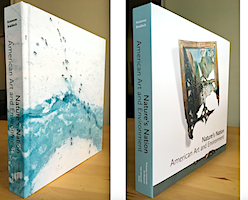 |
Nature’s Nation: American Art and Environment, by Karl Kusserow and Alan C. Braddock (Princeton University Art Museum and the Yale University Press, 2018). Reframing more than 300 years of diverse artistic practice in North America, from the colonial period to the present, Nature’s Nation: American Art and Environment examines for the first time how American artists have both reflected and shaped environmental understanding while contributing to the emergence of a modern ecological consciousness. Subhankar’s photograph Caribou Migration I is included in the exhibition, discussed in the book, and serves as the book’s inside cover–wrap. BOOK PAGE ON THE YALE UNIVERSITY PRESS |
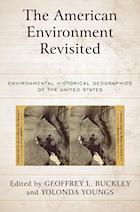 |
The American Environment Revisited: Environmental Historical Geographies of the United States, edited by Geoff Buckley and Yolanda Youngs (Rowman & Littlefield, 2018). This innovative book provides a dynamic—and often surprising—view of the range of environmental issues facing the United States today. A distinguished group of scholars examines the growing temporal, spatial, and thematic breadth of topics historical geographers are now exploring. Historian Finis Dunaway’s essay, “Reconsidering the Sublime: Images and Imaginative Geographies in American Environmental History” is included in this volume. Dunaway begins and ends his essay with a discussion of the photograph Snow Geese I that Subhankar made in the Coastal Plain of the Arctic National Wildlife Refuge in 2002. BOOK PAGE ON ROWMAN & LITTLEFIELD |
 |
Decolonizing Nature: Contemporary Art and the Politics of Ecology, by T.J. Demos (Sternberg Press, distributed by MIT Press, September 2016). While ecology has received little systematic attention within art history, its visibility and significance has grown in relation to the threats of climate change and environmental destruction. By engaging artists’ widespread aesthetic and political engagement with environmental conditions and processes around the globe—and looking at cutting–edge theoretical, political, and cultural developments in the Global South and North—Decolonizing Nature offers a significant, original contribution to the intersecting fields of art history, ecology, visual culture, geography, and environmental politics. The book includes a chapter, “Climates of Displacement: From the Maldives to the Arctic,” in which Demos includes a discussion of Subhankar’s Arctic photography and social–environmental activism. Subhankar also wrote a blurb for the book’s back–cover. BOOK PAGE ON MIT PRESS |
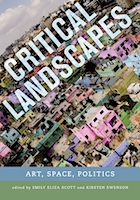 |
Critical Landscapes: Art, Space, Politics, edited by Emily Eliza Scott and Kirsten J. Swenson (University of California Press, June 2015). … some of the most compelling artists today are engaging with the politics of land use, including the growth of the global economy, climate change, sustainability, Occupy movements, and the privatization of public space. … Editors Emily Eliza Scott and Kirsten Swenson bring together a range of international voices and artworks to illuminate this critical mass of practices. One of the first comprehensive treatments of land use in contemporary art, Critical Landscapes skillfully surveys the stakes and concerns of recent land–based practices, outlining the art historical contexts, methodological strategies, and geopolitical phenomena. The book includes an essay “Documenting Accumulation by Dispossesion” by Ashley Dawson, in which Dawson includes a discussion of Subhankar’s work and also includes one of Subhankar’s photographs to accompany his essay. BOOK PAGE ON UNIVERSITY OF CALIFORNIA PRESS |
 |
A Companion to American Art, edited by John Davis, Jennifer A. Greenhill, and Jason D. LaFountain (Wiley, May 2015). A Companion to American Art presents 35 newly–commissioned essays by leading scholars that explore the methodology, historiography, and current state of the field of American art history. The book offers a fascinating portrait of the evolution and current state of the field of American art history and suggests future directions of scholarship. The book includes an essay “From Nature to Ecology: The Emergence of Ecocritical Art History” by Alan C. Braddock, in which Braddock includes a discussion of Subhankar’s work. BOOK PAGE ON WILEY |
 |
Undermining: A Wild Ride Through Land Use, Politics, and Art in the Changing West, by Lucy R. Lippard (New Press, April 2014). Working from her own lived experience in a New Mexico village and inspired by gravel pits in the landscape, Lippard weaves a number of fascinating themes—among them fracking, mining, land art, adobe buildings, ruins, Indian land rights, the Old West, tourism, photography, and water—into a tapestry that illuminates the relationship between culture and the land. From threatened Native American sacred sites to the history of uranium mining, she offers a skeptical examination of the “subterranean economy.” Lippard writes, “The photographers represented in this book are among those who are deeply aware of the meanings embedded in their images, even when they are not obvious. Some, like Subhankar Banerjee, known for his stunning images of the Arctic and his eloquent advocacy on its behalf, declare themselves activists first and artists second.” BOOK PAGE ON NEW PRESS |
 |
Art and Politics Now, by Anthony Downey (Thames & Hudson, 2014). An accessible guide to politically engaged art of the 21st century, exploring some of the most daring and ambitious art projects of our time. Downey writes, “Artist, educator and activist Subhankar Banerjee’s project Land–as–Home (2000–) consists of two large–scale series, Arctic and Desert. Both are concerned with a number of interconnected issues, not least the shelter and food that the earth affords its inhabitants and how these basic elements of life are under threat from industrialized societies. … In Gwich’in and the Caribou (2007), we see two members of the Gwich’in community skinning caribou, an image that reflects on the broader issue of their struggle to save the calving ground of the caribou from oil and gas development.” BOOK PAGE ON THAMES & HUDSON |
 |
Living Oil: Petroleum Culture in the American Century, by Stephanie LeMenager (Oxford University Press, January 2014). Engages with a wide spectrum of cultural forms: museum exhibits, poetry, documentary film, fiction, and still photography. Contributes to the emerging scholarship on peak oil and the transition to more durable, resilient, and sustainable forms of energy. Will interest scholars of environmental history, literature, film, and American Studies more broadly. LeMenager mentions Subhankar’s Arctic photography and selected a few words from a 2010 lecture Subhankar gave as the epigraph in the book’s Introduction. BOOK PAGE ON OXFORD UNIVERSITY PRESS |
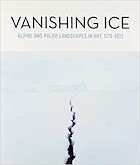 |
Vanishing Ice: Alpine and Polar Landscapes in Art, 1775–2012, by Barbara C. Matilsky (University of Washington Press, October 2013). Vanishing Ice introduces the rich artistic legacy of the planet’s frozen frontiers now threatened by a changing climate. Tracing the impact of glaciers, icebergs, and fields of ice on artists’ imaginations, this interdisciplinary survey explores the connections between generations of artists who adopt different styles, media, and approaches to interpret alpine and polar landscapes. Subhankar’s photograph Caribou Migration I was included in the exhibition and discussed in the book. BOOK PAGE |
 |
Impasses of the Post–Global: Theory in the Era of Climate Change, Vol. 2, edited by Henry Sussman (Open Humanities Press, 2012). The diverse materials comprising Impasses of the Post–Global take as their starting point an interrelated, if seemingly endless sequence of current ecological, demographic, socio–political, economic, and informational disasters. These have impacted on the stakes and tenor of cultural criticism as much as they have on tangible relations in the contemporary world. The contributors to the Impasses struggle as valiantly with a rapidly unfolding set of new discursive and communicative preconditions as they do with the open–ended chain of current insults and injuries to the ecological, socio–political, and cultural surrounds. These in turn demand increased attentiveness on the part of culturally and politically engaged readers. Impasses of the Post–Global includes Yates McKee’s essay, “Of Survival: Climate Change and Uncanny Landscape in the Photography of Subhankar Banerjee.” BOOK PAGE ON OPEN HUMANITIES PRESS |
 |
Far Field: Digital Culture, Climate Change, and the Poles, edited by Jane D. Marsching and Andrea Polli (published by Intellect and distributed by the University of Chicago Press, 2012). Human understanding of the rapidly changing environments of the North and South Poles—and the realities of climate change—has been radically transformed by a host of innovations afforded by the digital technologies. Far Field presents essays from artists and scholars who address the shift in our collective cultural understanding through a selection of the most significant artistic, scientific, technological, and philosophical interpretations of the poles over the past decade. The book includes an essay “Disappearing Ice and Missing Data: Climate Change in the Visual Culture of the Polar Regions,” by Lisa Bloom and Elena Glasberg. BOOK PAGE ON UNIV. OF CHICAGO PRESS |
 |
Earth Now: American Photographers and the Environment, by Katherine Ware (Museum of New Mexico Press, 2011). Ranging from documentary to conceptual, the photographs touch on such topics as land and water use, the human place in the landscape, mounting consumer waste, industrial pollution, roof gardens and the green roof initiative, local food production, energy consumption, and the effects of industry on humans and animals. Katherine Ware’s text offers insightful commentary on photography and the ways that environmental issues have been framed and advanced through the medium of photography. NEW MEXICO MUSEUM OF ART EXHIBIT / BOOK PAGE |
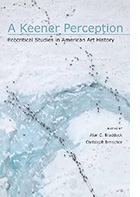 |
A Keener Perception: Ecocritical Studies in American Art History, edited by Alan C. Braddock and Christoph Irmscher (Tuscaloosa: University of Alabama Press, 2009). This anthology includes historian Finis Dunaway’s essay “Reframing the Last Frontier: Subhankar Banerjee and the Visual Politics of the Arctic National Wildlife Refuge.” The book offers a series of case studies on topics ranging from John White’s watercolors of the Carolina landscape executed during Sir Walter Raleigh’s 1585 Roanoke expedition to photographs by environmental activist Eliot Porter. Studying such artists and artworks through an ecocritical lens not only provides a better understanding of these works and the American landscape, but also brings a new interpretive paradigm to the field of art history—a field that many of these critics believe would do well to embrace environmental concerns as a vital area of research. BOOK PAGE ON UNIV. OF ALABAMA PRESS |
 |
Art in Action: Nature, Creativity, and Our Collective Future, by Natural World Museum (Natural World Museum, 2007). In Art in Action, seventy–nine artists share their stories and work to paint a portrait of our natural world today and the potential pathways—both positive and negative—we may follow from here. Their art expresses appreciation for all species and landscapes and explores our natural world lost, mourned and reconstructed. It described the fantasy of paradises new and vanished. Each chapter asks us to celebrate, reflect, interact, protect and act, demonstrating the diversity of life and the legacy that the next generation will inherit. BOOK PAGE |
AUTHOR OF BOOK PREFACE
 |
Arts Programming for the Anthropocene: Art in Community and Environment, by Bill Gilbert with Anicca Cox (Routledge, November 2018). Arts Programming for the Anthropocene argues for a role for the arts as an engaged, professional practice in contemporary culture, charting the evolution of arts over the previous half century from a primarily solitary practice involved with its own internal dialogue to one actively seeking a larger discourse. … Based on thirty years of experimentation in arts pedagogy, including the creation of the Land Arts of the American West (LAAW) program and Art and Ecology discipline at the University of New Mexico, this book is written for arts practitioners, aspiring artists, art educators, and those interested in how the arts can contribute to strengthening cultural resiliency in the face of rapid environmental change. Subhankar wrote the book’s Preface. BOOK PAGE ON ROUTLEDGE WEBSITE |
 |
Arctic Wings: Birds of the Arctic National Wildlife Refuge, edited by Dr. Stephen Brown (The Mountaineers Books, 2006). This book brings together in words and images numerous species of birds that journey to the refuge from every continent. This book is also a passionate plea against allowing oil development in the coastal plain of the Arctic Refuge, the nesting ground of these birds. Subhankar Banerjee and Stephen Brown provided vision for the book. Subhankar contributed photographs and wrote the Preface. Foreword by former U.S. President Jimmy Carter and Introduction by David Allen Sibley. BOOK PAGE ON THE MOUNTAINEERS BOOKS WEBSITE |
AUTHOR OF BACK–COVER BLURB
 |
Defending the Arctic Refuge: A Photographer, an Indigenous Nation, and a Fight for Environmental Justice, by Finis Dunaway (The University of North Carolina Press, May 2021). “Defending the Arctic Refuge reads like a compelling movie plot in which the typically prominent—environmental celebrities, national newspapers, and Beltway politicians—fade into the background, while the overlooked—an unsung photographer–activist and Arctic Indigenous leaders—take center stage, joined by a larger cast of characters who contributed to this struggle. It is a book that I’ve long hoped to see: a people’s history of the longest–running multispecies justice campaign in North America. Written by a master storyteller and meticulous scholar, this is an inspiring and empowering book.” —Subhankar Banerjee BOOK PAGE ON UNC PRESS |
 |
Witness Tree: Seasons of Change with a Century–Old Oak, by Lynda V. Mapes (Bloomsbury, April 2017). “As human–caused climate change continues to accelerate, Witness Tree arrives with an ambitious aim—to mend the tattered bond between humans and nature by deeply engaging with a single big oak and the ecology of life it harbors. With delightful prose full of wonder, Witness Tree is momentous guide for our rapidly changing time.” —Subhankar Banerjee BOOK PAGE ON BLOOMSBURY |
 |
Humanities for the Environment: Integrating knowledge, forging new constellations of practice
, edited by Joni Adamson and Michael Davis (Routledge, November 2016). “Humanities for the Environment aims to put ‘this world back together’ for all living beings. We would do well to heed this clarion chorus.” —Subhankar Banerjee BOOK PAGE ON ROUTLEDGE |
 |
Decolonizing Nature: Contemporary Art and the Politics of Ecology, by T.J. Demos (Sternberg Press, distributed by MIT Press, September 2016). “Demos breaks new ground in art criticism. In an expansive analysis of polyvocal artist–activist practices in the Global South and the North, Demos eschews environmental catastrophism, scientific determinism, and techno–fixes to highlight collaborative resistance to neocolonial violence and neoliberal collusion–to–plunder. He is also searching for what the path forward might be. Rigorous, accessible, and rebellious, Decolonizing Nature is an inspiring and indispensible contemporary art manifesto.” —Subhankar Banerjee BOOK PAGE ON MIT Press |